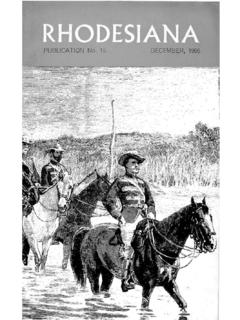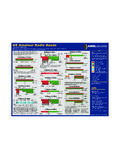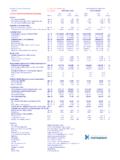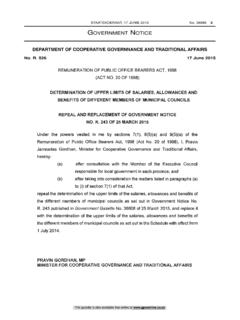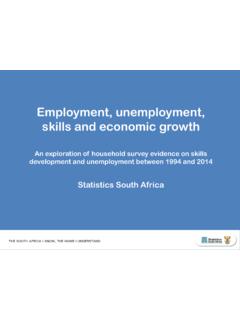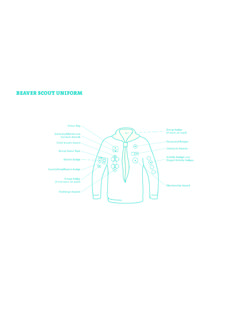Transcription of REPORT ON THE 1980S DISTURBANCES IN MATABELELAND …
1 1 REPORT ON THE 1980 s DISTURBANCES IN MATABELELAND & THE MIDLANDS Compiled by the catholic commission for justice and Peace in Zimbabwe, March 1997 2 REPORT ON THE 1980S DISTURBANCES IN MATABELELAND AND THE MIDLANDS Compiled by the catholic commission for justice and Peace in Zimbabwe, March 1997 REPORT OUTLINE PART ONE - BACKGROUND i) Statement explaining who CCJP and LRF and BLPC are. ii) A Brief Chronicle of Events (1-2 page summary for reference). iii) A List of Abbreviations : a.)Political and military violence in 1980S b.)The Intentions of this REPORT - an Outline i.) National Acknowledgement ii.) Reconciliation - a Chance to be Heard iii.) Systematic Collation of Data iv) The Legacy of the 1980S for its Victims c.)Timing of the REPORT SOURCES AND METHODOLOGY: 1.)Selection of Case Study Areas 2.) Summary of Data Sources 3.)Discussion of Data Sources i.
2 CCJP ii.) BLPC iii.) Human Rights Documents iv.) The Chronicle v.) Academic Works vi.) Interviews vii) Material Evidence 3 4.)Methodology i.) Named Victims - HR Data Base ii.) The Chronicle Data Base iii.) Unnamed Victims - HR Data Base iv.) Unnamed Victims - Case Study Areas HISTORICAL OVERVIEW: 1.)The Legacy of the 1970s a.) Colonial Rule b.) The ZANLA-ZIPRA Split. 2.)South African Destabilisation Policy a.) A Two-fold Approach b.) "Operation Drama" 3.)"The Dissident Problem" a.) A Summary of Contributing Factors b.) The Dissidents' Perspective c.) "Super ZAPU" d.) Other "Dissident" Groups e.) Dissident numbers f.) Popular Support g.) Dissident Activities h.) Summary 4.)Government Action: 1980 to 1982 a.) The Arms Caches b.) Banditry Rises c.) Government Response d.) The Abduction of the Tourists 4i) Indemnity Regulations ii) "Dissidents" or Ordinary Civilians? 5.)5 Brigade Mobilisation: "Gukurahundi" a.
3 The Commissioning of 5 Brigade b.) The Training of 5 Brigade - 1981\2 c.) Early 5 Brigade Exercises d.) Passing Out Parade 6.)Deployment of 5 Brigade - MATABELELAND North, 1983 a.) January to March, 1983 - initial impact b.) Early Indications of Events c.) ZCBC Response - "Reconciliation is Still Possible" d.) Government Response e.) April to Dec 1983 - 5 Brigade Impact f.) Disappearances 7.)5 Brigade Deployment, Mat South, 1984 a.) Jan to May 1984 b.) 5 Brigade - Retraining and disbandment c.) Exceptions to the Rule 8.)Military Rationale for 5 Brigade 9.)Political Impact of 5 Brigade Activities 10)Summary - 5 Brigade 11.)General Background of Events - 1984 to 1988 a.) commission of Inquiry b.) The Food Embargo and Mat South c.) ZANU-PF Youth Brigades and Election Violence d.) CIO: Detentions, Torture and Political Kidnappings 5e.) PISI f.) Dissident Violence in 1984/5 g.) More Detentions and ThreatenedTreason Trials h.
4 Other Events during 1986/7 i.) The Unity Accord: Amnesty PART TWO - FINDINGS . CASE STUDY ONE NYAMANDLOVU I. 1.)Archival Data a.)CCJP b.)The Chronicle: an Outline, and a Quantification of dissident atrocities 2.)Interviews in 1995/6, and Integration of Sources 3.)Summary of 5 Brigade Impact 4.)Overview of Human Rights abuses in Nyamandlovu/Tsholotsho 5.)Village by Village Summary - including maps of sub-regions 6.)Tables summarisng Atrocities by Sub-region CASE STUDY TWO MATOBO 1.)Archival Data a.)CCJP b.)The Chronicle 2.)Interviews in 1995/6 3.)Overview of Events revealed by Data a.)A Brief Chronology b.)The Food Embargo c.)The 5 Brigade and CIO d.)Mass Detention e.)Bhalagwe Camp 4.)Table Summarising Atrocities by Sub-region 5.) Village by Village Summary, including Maps IRESULTS - ALL NAMED VICTIMS 1.)Key - brief mention of difference in Chronicle Data Base and HR Base 2.
5 Tables of Offences by Year and Perpetrator 63.)Graphs of Tables in Two, III, with discussion of trends shown. 4.)A Discussion of How to assess the Impact of the 1980S DISTURBANCES , in Terms of Real Numbers of Victims PART THREE - DISCUSSION OF FINDINGS . ORGANISED VIOLENCE - THE IMPLICATIONS OF THE 1980S DISTURBANCES FOR ITS VICTIMS I. a.)Definitions of Organised Violence. b.)Forms of Organised Violence - examples from the 1980S c.)Consequences of Organised Violence d.)Consequences of Organised Violence for Society e.)Relevance to MATABELELAND - Conclusion LEGAL DAMAGES a.) 10 typical cases of abuse assessed for damages - suppositionary. IHUMAN REMAINS - THEIR POSSIBLE RECOVERY a.)Categorisation of types of human remains likely at this point. b.)Some recommendations on how best to recover them in each case, if that should prove to be the will of affected communities.
6 PART FOUR - RECOMMENDATIONS GENERAL RECOMMENDATIONS 7 REPORT ON THE 1980S DISTURBANCES IN MATABELELAND AND THE MIDLANDS Compiled by the catholic commission for justice and Peace in Zimbabwe, March 1997 CHRONICLE OF EVENTS: APRIL 1980 - JULY 1990 1980 APR Zimbabwe gains independence. ZANU-PF win 57 seats out of 100 and Cde Robert Mugabe assumes leadership of the nation. Before and after Independence there are sporadic outbursts of violence in the vicinity of Guerrilla Assembly Points (APs) all over the country. JULY State of Emergency, in place since 1965, renewed: it is further renewed every six months until July 1990. OCT Prime Minister Mugabe enters into an agreement with North Korea for the training and arming of a brigade of the Zimbabwe defence forces. NOV There is a battle between ZIPRA and ZANLA Guerrillas, moved from rural Assembly Points to Entumbane near Bulawayo.
7 1981 FEB There is a second, major outbreak of violence at Entumbane which spills over to Ntabazinduna and Connemara in the Midlands. More than 300 die. The Dumbutshena REPORT is commissioned by the government to investigate events surrounding the Entumbane uprising: to date its findings have been suppressed. AUG ~ Inkomo Army Barracks are sabotaged by South African agents destroying $50 million in ammunition and equipment. AUG ~ North Korean instructors arrive to begin training the "5 Brigade", which will be used to "combat dissidents". DEC ~ South African agents sabotage ZANU-PF headquarters, killing 7 and injuring 124. 1982 FEB ~ "Discovery" of arms caches in MATABELELAND leads to arrest of ZIPRA high commanders and expulsion of ZAPU leaders from cabinet. Ex-ZIPRAS defect in large numbers and banditry increases. JUNE ~ 8 There is an abortive attack on Prime Minister Mugabe's residence.
8 A ZIPRA connection is established, leading to curfews, detentions and weapon searches in Bulawayo. JULY ~ 6 foreign tourists are kidnapped and killed, although their deaths are only confirmed years later. Curfews are imposed in MATABELELAND , troop numbers and detentions are stepped up. JULY ~ Thornhill Air Base in Gweru is sabotaged by South African Agents, and 13 military planes are destroyed. JULY ~ Government reinstates the Indemnity and Compensation Bill first used in 1975, granting immunity from prosecution to government agencies. NOV CCJP sends a confidential REPORT to the Prime Minister expressing concern at army excesses. DEC ~ The 5 Brigade has its "passing out" parade and is ready for deployment. 1983 6 JAN ~ The Government allows farmers to re-arm, to protect themselves against dissidents, after a spate of attacks killing 6 people on commercial farms. Between Nov 1982 and Dec 1983, 33 people will be murdered by dissidents on commercial farms.
9 26 JAN ~ The 5 Brigade is deployed in MATABELELAND North. Reports of atrocities begin within days. FEB ~ Atrocities continue and first documentation is presented to government. MAR ~ Nkomo is placed under house arrest and flees to Botswana. A 4 day cordon around Bulawayo leads to 1000 detentions. MAR ~ Zimbabwe catholic Bishops Conference (ZCBC) and catholic commission for justice and Peace (CCJP) speak personally to Prime Minister Mugabe and present their paper "Reconciliation is Still Possible". 5 APR ~ The curfew is lifted in MATABELELAND North. 22 JULY ~ 5 Brigade is withdrawn from MATABELELAND for a brief retraining session. 29 AUG ~ 5 Brigade is redeployed in MATABELELAND North. SEPT ~ Chihambakwe commission of Inquiry is set up to investigate atrocities in MATABELELAND . 1984 JAN ~ It is announced in Parliament that since Jan 1983, dissidents have murdered 120, mutilated 25, raped 47 and committed 284 robberies.
10 JAN ~ The Chihambakwe Committee begins to collect evidence of army atrocities in Bulawayo. 94 FEB ~ A food embargo is imposed on MATABELELAND South and 5 Brigade is simultaneously deployed in the region. Mass detentions follow, with thousands of civilians being incarcerated at Bhalagwe Camp in Matobo District. 7 APR ~ ZCBC expresses deep concern over conditions in MATABELELAND South. 10 APR ~ The curfew is relaxed and the food embargo is lifted. JULY ~ It is announced in Parliament that since Jan 1984, dissidents have killed 45 civilians, raped 37 and committed 253 robberies. LATER The 5 Brigade is withdrawn and retrained and in 1985 it is redeployed in MATABELELAND . 1984 Pre-election violence begins, mainly at the hands of the ZANU-PF Youth Brigades. Areas notably affected include Gweru, Kwekwe, Beitbridge and Plumtree. 1985 ZANU-PF Youth rampages continue before and after the July elections, resulting in 2000 being left homeless and scores dead in MATABELELAND , the Midlands and Harare.
